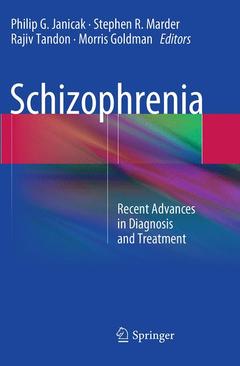Description
Schizophrenia, Softcover reprint of the original 1st ed. 2014
Recent Advances in Diagnosis and Treatment
Language: English
Subject for Schizophrenia:
Approximative price 116.04 €
Subject to availability at the publisher.
Add to cartSupport: Print on demand
331 p. · 15.5x23.5 cm · Hardback
Description
/li>Contents
/li>Biography
/li>Comment
/li>
Schizophrenia: Recent Advances in Diagnosis and Treatment is a major addition to the literature, offering practical, comprehensive coverage of diagnosis and treatment options, genetic issues, neuroimaging, long-term management of schizophrenia, and future directions and predictions of how clinical care of schizophrenia will change. The book is divided into five sections. Section 1 summarizes the present state of knowledge about the diagnosis and treatment of schizophrenia. This includes recent changes in the DSM 5 categorization of schizophrenia and its implications for treatment. Section 2 considers recent discoveries into its pathoetiology, including the status of biological markers, genetics and neuroimaging as they relate to diagnosis and potential novel therapeutic approaches. Section 3 explores the optimization of present therapeutic approaches; novel treatments; and management of the substantial risks associated with both the illness and its present therapies. Section4 discusses progress in the long-term management of schizophrenia, focusing on biological and psychotherapeutic strategies to improve functioning and facilitate recovery. Section 5 considers future directions and predictions of how diagnosis and treatment of schizophrenia will change. An invaluable addition to the field, Schizophrenia: Recent Advances in Diagnosis and Treatment is a definitive resource that will be of great interest to all clinicians caring for patients with schizophrenia.




